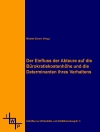COVID-19 set new challenges for the economies in Eastern Europe and Central Asia. Strong policy and fiscal support allowed businesses to stay afloat, with firms making long strides in innovation and in becoming global suppliers. This report examines the pandemic's business impact, trade and innovation, green economy and the financial gaps in this region. The report's analysis is based on the EBRD-EIB-WBG Enterprise Survey 2019, covering over 28 000 registered firms, and the first round of the COVID-19 Follow-up Enterprise Surveys, with over 16 000 firms.
Зміст
Foreword
Executive summary
I.I. The EBRD-EIB-WBG Enterprise Survey: providing an in-depth perspective on firms and the obstacles in their business environment
I.II. Enterprises in Eastern Europe and Central Asia during the pandemic
I.III. Trade participation, innovation and competitiveness
I.IV. The green economy
I.V. Financial deepening and firms’ access to finance
I.VI. Conclusions and policy implications
Chapter 1 Enterprises in Eastern Europe and Central Asia during the pandemic
1.1. Introduction
1.2. Context: the pandemic in Eastern Europe and Central Asia
1.3. Firm performance during the pandemic: stylised facts
1.4. Firm characteristics and performance during the pandemic
1.5. Access to finance and policy support
1.6. Conclusions and policy implications
1.7. References
1.8. Annex
Chapter 2 Trade participation, innovation and competitiveness
2.1. Introduction
2.2. Trade integration, economic development and barriers to trade
2.3. Innovation, management practices and firms’ competitiveness
2.4. International trade and innovation
2.5. The European Union as a trade facilitator and driver of innovation
2.6. COVID-19 adaptability of innovators and traders
2.7. Conclusions and policy implications
2.8. References
2.9. Annex
Chapter 3 The green economy
3.1. Introduction
3.2. Taking stock
3.3. Green management
3.4. Corporate ESG responsibility practices
3.5. Green investment
3.6. Energy efficiency investments
3.7. Conclusions and policy implications
3.8. References
Chapter 4 Financial deepening and firms’ access to finance
4.1. Introduction
4.2. Firms, banks, credit constraints and financial autarky
4.3. Access to finance, investment and growth
4.4. Estimating credit gaps: quantifying the extent to which private enterprises are underserved
4.5. Conclusions and policy implications
4.6. References
4.7. Annex
Glossary and Acronyms
Про автора
About the European Investment Bank
The European Investment Bank Group is the EU bank and the world's biggest multilateral lender. We finance sustainable investment in small and medium-sized enterprises, innovation, infrastructure, and climate and environment. We have financed Europe's economic growth for six decades and are at the forefront of EU crisis response, leading the world in climate investment and backing development of the first COVID-19 vaccine. We are committed to triggering €1 trillion in investment in climate and environmental sustainability to combat climate change by the end of this decade. About 10% of all our investment is outside the European Union, where our EIB Global branch supports Europe's neighbours and global development.












